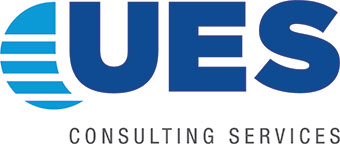So, what is a Phase 1 Environmental Site Assessment?
A Phase 1 Environmental Site Assessment, commonly called an ESA, or Phase 1 ESA, is an assessment done to research the historical and current uses of a property as part of a Commercial Real Estate transaction.
Why do Commercial Real Estate transactions require a Phase 1 Environmental Site Assessment?
Phase 1 ESA is needed to assess if historical or current property uses have impacted the soil or groundwater beneath the property. If so, this could pose a threat to human health and a major issue for the environment. If these problems exist, then a potential liability is present for the owner and/or lender. This also affects the value of the property.
If a Phase 1 Environmental Site Assessment is finished pre-closure of a real estate transaction, it can be used to fulfill the requirements of CERCLA’s (Comprehensive Environmental Response, Compensation and Liability Act) innocent land owner defense under All Appropriate Inquiries (AAI).
Finally, how are Phase 1 Environmental Site Assessments completed?
First, it’s important to note that Phase 1 ESA’s can be done on all types of properties; industrial, multi-family residential, commercial, vacant land, and agricultural. But all Phase I ESA’s must comply with ASTM E1527-13. (exception being properties comprised of large primarily undeveloped land, which can be researched under ASTM E2247-16).
1. Completing a site visit to observe uses of the property and adjacent properties along with past and current conditions of the property.
2. Reviewing federal, state, tribal, and local regulatory databases including, but not limited to, aboveground storage tanks (ASTs), underground storage tanks (USTs), known or suspected release cases, institutional and engineering controls, and the storage of hazardous substances and disposal of hazardous wastes including petroleum products.
3. Reviewing historical records, i.e. historical aerial photographs, fire insurance maps (Sanborn maps), historical topographic maps, and historical city directories.
4. Reviewing local and state agency records including, but not limited to, state environmental agencies, Fire Departments, Health Departments, and Building Departments.
5. Interviewing past and current property owners, occupants, operators, or others well known with the property.
6. Interviewing the Report User for judicial or title records for environmental liens and activity and use limitations (AULs); specialized experience or knowledge, actual knowledge; commonly known or reasonably ascertainable information; the reason for a significantly lower purchase price; and the reason for the preparation of the Phase I ESA. It’s the User responsibility to provide this information to qualify for the innocent landowner defense.
7. Finally, the
Environmental Professional (EP) evaluates all of this information to identify potential environmental risks to the property. EPs highest concerns are with properties including, but not limited to, gas stations, dry cleaners, printing operations, manufacturing, and auto/vehicle repair.
8. Once the Phase I ESA is complete, the EP will summarize what issues were identified on the property and make recommended steps to address these concerns.
In summary, Phase 1 Environmental Site Assessments identify existing or potential environmental contamination liabilities. They are done to satisfy Commercial and Residential Real Estate transactions and ensure environmentally and human safety. They are completed on all varieties of properties but all comply with ASTM E1527-13. UES Consulting Services is ready and happy to help with any and all of your Phase I and Phase II ESA needs.
UES Consulting and our team of inspectors would be glad to help you with your Phase 1 Environmental Site Assessment.
Important Details to Note for Phase I Environmental Site Assessments…
“
While not part of ASTM requirements, Phase I ESA reports typically include a discussion of observed suspect asbestos containing materials (ACM), potential lead-based paint (LBP), and mold growth; as well as the potential for lead in drinking water and radon. Sampling for these non-ASTM concerns is beyond the scope of a standard Phase I ESA, but can be included upon request.“
“
A recognized environmental condition (REC) indicates known contamination or the potential for the subsurface to have been impacted by contamination (either from the subject property or possibly from an offsite source). A controlled recognized environmental condition (CREC) identifies that the property has been impacted by contamination which has been investigated and remediated; however, contamination remains and would require additional work if redeveloped. A historical recognized environmental condition (HREC) identifies a release impacted the subject property which has been investigated and remediated meeting unrestricted use criteria.“


